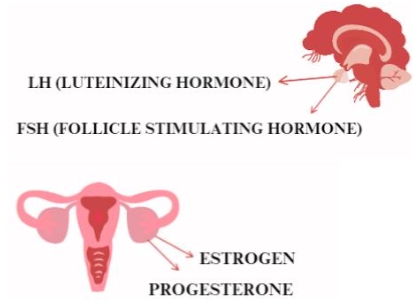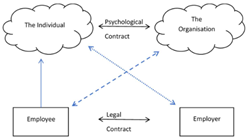Engaging in language therapy to enhance the proficiency of simultaneous bilingualism: A case study of a multilingual child
Abstract
Bilingualism and multilingualism are no longer exceptional occurrences on today’s globe; instead, they have become the prevailing standards in cultures worldwide. Individuals can become bilingual by either simultaneous acquisition of two languages from childhood or sequential acquisition over time as bilinguals. The primary objective of this study is to determine the role of language therapists in assisting parents and teachers in optimizing the dual-language proficiency of young children. This case study was conducted to investigate this matter, and it was determined that a balanced utilization of both languages, coupled with guidance from language professionals to parents and teachers, dramatically enhances a child’s performance. In addition, parents consistently strive for their child to become multilingual, as they perceive it as a beneficial factor for their child’s future. The data was gathered through a semi-structured interview session with parents and real-life scenario observations. This case study illustrates the advantages and disadvantages of being bilingual or multilingual. The study findings will assist parents and early childhood educators in dealing with children coping with different language encounters at home and school.
References
Agulló, J. A., & Cerezo Herrero, E. (2019). Bilingual education research: a bibliometric study. Elia, 19, 235–370. https://doi.org/10.12795/elia.mon.2019.i1.13
Akıncı, M. A. (2016). Literacy activities for monolingual and bilingual children and youth living in France (Turkish). Turkophone, 2(2).
Baker, C. (2000). A Parents’ and Teachers’ Guide to Bilingualism. Multilingual Matters: Clevedon.
Barron-Hauwaert, S. (2011). Bilingual siblings: language use in families. Multilingual Matters: Bristol, Buffalo. https://doi.org/10.21832/9781847693280
Ben-Zeev, S. (1977). The Influence of Bilingualism on Cognitive Strategy and Cognitive Development. Child Development, 48, 1009-1018. https://doi.org/10.2307/1128353
Bialystok, E. (1999). Cognitive Complexity and Attentional Control in the Bilingual Mind. Child Development, 70(3), 636–644. Portico. https://doi.org/10.1111/1467-8624.00046
Bialystok, E., Craik, F. I. M., Klein, R., & Viswanathan, M. (2004). Bilingualism, Aging, and Cognitive Control: Evidence From the Simon Task. Psychology and Aging, 19(2), 290–303. https://doi.org/10.1037/0882-7974.19.2.290
Bican, G. (2017). Defining Bilingualism: Theoretical Discussions and Current Approaches (Turkish). Ana Dili Eğitimi Dergisi. 5(2), 353–366. https://doi. org/10.16916/added.298779
Bogulski, C. A., Bice, K., & Kroll, J. F. (2019). Bilingualism as a desirable difficulty: Advantages in word learning depend on the regulation of the dominant language. Bilingualism: Language and Cognition, 22(5), 1052-1067. https://doi.org/10.1017/S1366728918000858
Bölükbaş Kaya, F., Hançer, F. B. & Golynskaia, A. (2019). Bilingualism: Theoretical Discussions on Definition and Types (Turkish). IJLET, 7(2), 98-113. http://dx.doi. org/10.29228/ijlet.23366
Broersma, M., Carter, D., Donnelly, K., & Konopka, A. (2020). Triggered codeswitching: Lexical processing and conversational dynamics. Bilingualism: Language and Cognition, 23(2), 295-308. https://doi.org/10.1017/S1366728919000014
Byers-Heinlein, K., Jardak, A., Fourakis, E., & Lew-Williams, C. (2022). Effects of language mixing on bilingual children’s word learning. Bilingualism: Language and Cognition, 25(1), 55-69. https://doi.org/10.1017/ S1366728921000699
Carlson, S. M., & Meltzoff, A. N. (2008). Bilingual experience and executive functioning in young children. Developmental Science, 11(2), 282–298. https://doi.org/10.1111/j.1467-7687.2008.00675.x
Cheung, S., Kan, P. F., Winicour, E., & Yang, J. (2019). Effects of home language input on the vocabulary knowledge of sequential bilingual children. Bilingualism: Language and Cognition, 22(5), 986–1004. https://doi.org/10.1017/S1366728918000810
Cornut, C., Mahé, G., & Casalis, S. (2022). L2 word recognition in French–English late bilinguals: Does modality matter? Bilingualism: Language and Cognition, 25(1), 121-136. https://doi.org/10.1017/S1366728921000511
Cortina, R., Makar, C. Mount-Cors, M. F. (2015). Dual Language as a Social Movement: Putting Languages on a Level Playing Field. Columbia Libraries Journal, 17(1), 5–16. https://doi.org/10.52214/cice.v17i1.11518
de Mejía, A.-M. (2002). Power, Prestige and Bilingualism: International Perspectives on Elite Bilingual Education. Multilingual Matters. https://doi.org/10.21832/9781853595929
Engemann, H. (2022). How (not) to cross a boundary: Crosslinguistic influence in simultaneous bilingual children’s event construal. Bilingualism: Language and Cognition, 25(1), 42–54. https://doi.org/10.1017/ S1366728921000298
Ertek, B., Süverdem, F. B. (2020). Bilingualism and Biculturalism: Migration, Identity and Ownership (Turkish). The Journal of International Lingual Social and Educational Sciences, 6(2), 183-207. https://doi.org/10.34137/ jilses.826142
Gardner-Chloros, P. (2009). Code-switching. Cambridge University Press. https://doi.org/10.1017/cbo9780511609787
Gonçalves, T. S., Viapiana, V. F., Fonseca, R. P., & Hübner, L. C. (2021). Literacy, metalinguistic, and executive functions processing in bilingual children speakers of similar typology languages in a border area. Bilingualism: Language and Cognition, 24(4), 758-766. https://doi.org/10.1017/S1366728920000735
Gold, B. T., Kim, C., Johnson, N. F., et al. (2013). Lifelong bilingualism maintains neural efficiency for cognitive control in aging. J Neurosci, 33(2), 387-396. https://doi.org/10.1523/JNEUROSCI.3837-12.2013
Günaydın, Y. (2020). A Review of Published Articles Regarding Bilinguality (2010-2020) (Turkish). International Journal of Language Academy, 8(5), 352–365. http://dx.doi.org/10.29228/ijla.48083
Hamel, J., Dufour, S., Fortin, D. (1993). Case study methods. SAGE: Newbury Park, CA. https://doi.org/10.4135/9781412983587
Hamers, J. F., Blanc, M. (2000). Bilinguality and Bilingualism. Cambridge University Press: Cambridge. https://doi.org/10.1017/cbo9780511605796
Kałamała, P., Senderecka, M. & Wodniecka, Z. (2022). On the multidimensionality of bilingualism and the unique role of language use. Bilingualism: Language and Cognition, 25(3), 471-483. https://doi.org/10.1017/S1366728921001073
Mergen, F., Kuruoglu, G. (2021). Lateralization of lexical processing in monolinguals and bilinguals. International Journal of Bilingualism, 25(6), 1497–1509. https:// doi.org/10.1177%2F13670069211018842
Moriguchi, Y., Kanda, L. (2020). Bilingual effects on cognitive shifting and prefrontal activations in young children. International Journal of Bilingualism, 24(4), 729–739. https://doi.org/10.1177%2F1367006919880274
Plonsky, L., Sudina, E., & Hu Y. (2021). Applying meta-analysis to research on bilingualism: An introduction. Bilingualism: Language and Cognition, 24(5), 819–824. https://doi.org/10.1017/S1366728920000760
Saydi, T. (2013). Bilinguism Plurilinguism and its action in the Vision of the European Union (Turkish). Uluslararası Sosyal Araştırmalar Dergisi, 6(28), 269-283.
Şenaydın, F., Dikilitaş, K. (2022). Exploring child bilingual identity in Turkish context: A single case study. International Journal of Bilingual Education and Bilingualism, 25(1), 131-147. https://doi.org/10.1080/13670 050.2019.1639130
Sanchez-Azanza, V. A., López-Penadés, R., Buil-Legaz, L., et al. (2017). Is bilingualism losing its advantage? A bibliometric approach. PLoS ONE, 12(4), e0176151. https://doi.org/10.1371/journal.pone.0176151
Stoehr, A., Martin, C. (2022). Orthography affects L1 and L2 speech perception but not production in early bilinguals. Bilingualism: Language and Cognition, 25(1), 108-120. http://doi.org/10.1017/ S1366728921000523
Schwieter, J. W., & Iida, P. C. (2019). Intersections of language studies and social/political movements, activism, and participation. Critical Inquiry in Language Studies, 17(1), 1–4. https://doi.org/10.1080/15427587.2019.1707156
Tomić, A., Valdés K. J. R. (2022). Expecting the unexpected: Code-switching as a facilitatory cue in online sentence processing. Bilingualism: Language and Cognition, 25(1), 81-92. https://doi.org/10.1017/ S1366728921000237
Tomoschuk, B., Duyck, W., Hartsuiker, R., et al. (2021). Language of instruction affects language interference in the third language. Bilingualism-Language and Cognition, 24(4), 707–718. https:// doi.org/10.1017/s1366728921000043
Torregrossa, J., Andreou, M., Bongartz, C., & Tsimpli, I. M. (2021). Bilingual acquisition of reference: The role of language experience, executive functions, and crosslinguistic effects. Bilingualism: Language and Cognition, 24(4), 694-706. https://doi.org/10.1017/S1366728920000826
Uyar, G. (2012). Bilingualism (Turkish). Dilim AÜDTD, 9, 21-25.
Yağmur, K. (2010). Evaluation of Turkish teaching within the scope of language policies implemented in Europe (Turkish). Available online: http://www.ajindex.com/dosyalar/makale/acarindex-1423873123.pdf (accessed on 1 June 2024).
Yeşiltaş, E., Evci, N. (2021). A Bibliometric Analysis of Studies on Computer Literacy in Education (Turkish). Gazi Eğitim Bilimleri Dergisi, 7(3), 223- 242. https://dx.doi.org/10.30855/gjes.2021.07.03.00
Yıldız, C. (2013). Learners’ views on the teaching of Turkish as a mother tongue in Germany (Turkish). Adıyaman Üniversitesi Sosyal Bilimler Enstitüsü Dergisi, 11, 1083-1113. https://doi.org/10.14520/adyusbd.376
Zelazo, P. D., Muller, U., Frye, D., et al. (2003). Acknowledgments. Monographs of the Society for Research in Child Development, 68(3), 137. https://doi.org/10.1111/j.0037-976x.2003.00269.x
Zhang, X. (2020). A bibliometric analysis of second language acquisition between 1997 and 2018. Studies in Second Language Acquisition, 42(1), 199–222. http://dx.doi.org/10.1017/S0272263119000573
Copyright (c) 2024 Ushba Rasool, Muhammad Hammad Hussain Shah, Rehan Muhammad, Min Gao, Huang Wang, Babar Nawaz Abbasi

This work is licensed under a Creative Commons Attribution 4.0 International License.









